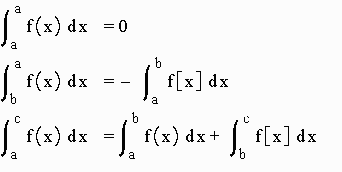I. Homework
II. Area of a rectangle and using rectangles to approximate area under a curve
Recall that the area of a rectangle is the height times the base. What if we wanted to paint a wall that has a ceiling the shape of y = x2 , a flat floor and a right wall at x = 2 yards and a left wall at x = 5 yards.

We can approximate the area by cutting out 6 rectangles. Since the base of the wall is 5 - 2 yards long, and there are 6 rectangles, the base of each rectangle is (5 - 2)/6 = .5 yards. The height of each rectangle is the y-coordinate of the left side of each rectangle. The x- coordinates are
2 + 0(.5),2 + 1(.5), 2 + 2(.5), 2 + 3(.5), 2 + 4(.5), 2 + 5(.5) so that the y coordinates are
(2 + 0(.5))2,(2 + 1(.5))2, (2 + 2(.5))2, (2 + 3(.5))2, (2 + 4(.5))2, (2 + 5(.5))2
We see that the ith rectangle has y coordinate:
height = (2 + i(.5))2 = 2 + 2i + .25i2
To get the area of the ith rectangle we multiply the height by the base:
(2 + 2i + .25i2)(.5)
Finally to get the total area we add the terms up:
sum[(2 + 2i + .25i2)(.5)]
This will be a lower bound for the area.
Learn the following formulas:
1) sum[c] = cn
2) sum[i] = n(n + 1)/2
3) sum[i2] = n(n + 1)(2n + 1)/6
4) sum[i3] = n2(n + 1)2/4
Hence: sum[(2 + 2i + .25i2)(.5)] = .5sum[2] + sum[i] + .125sum[i2]
= .5(10) + (5)(6)/2 + .125(25)(36)/2
In general the area under a curve y = f(x) is defined as
lim as n approaches infinity sum from i = 1 to n of f(a + i(b - a)/n))(b - a)/n
In our example, we have
lim sum from i = 1 to n of (2 + 3i/n)2(3/n)
= lim (3/n) sum of 4 + 18i/n + 9i2/n2
= lim[(3/n sum 4) + (54/n2 sum i) + 27/n3 sum i2]
= lim[(3/n (4n)) + (54/n2 (n)(n + 1)/2) + 27/n3 n(n + 1)(2n + 1)/6]
=12 + 27 + 27(2)/6 = 48
III. The Definite Integral
Definition: Let a = x0, x1, ...xn = b be a partition of [a,b] and let
xi-1 < ci < xi
then

is called a Reimann Sum, and the lim as the maximum delta xi approaches 0 is called the definite integral.
Note: f(x) can be negative
Usually to compute a definite integral, we use left or right sums.
Example
Find int from 1 to 3 of 2x + 1 dx
Solution: The right sum is sum [(2(1 +i(3-1)/n)+1)(3-1)/n
= sum [(3 +4i/n)(2/n)] = sum 6/n + 8/n2sum(i)
= (6/n)n + 8/n2(n(n + 1)/2) = 6 + 4[(n2 +n)/n2]
Taking the limit as n -> infinity we get 10
IV. Special cases:

|
Example:
int from -2 to 3 of |x|dx = int from -2 to 0 of -x dx+ int from 0 to 3 of xdx
= -1/2 (2)(2) + 1/2(3)(3) = 5/2